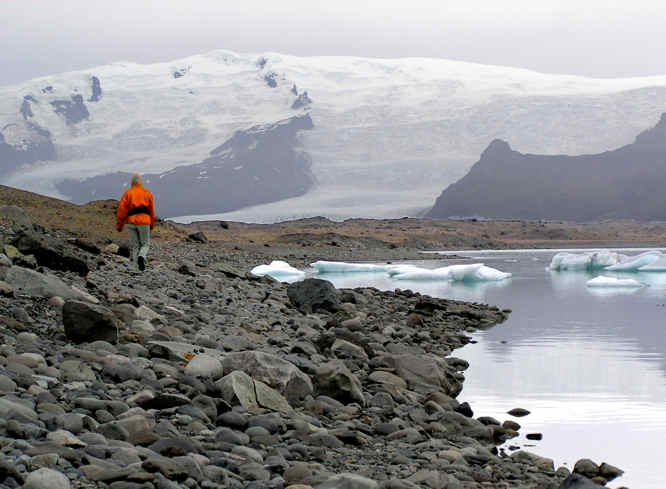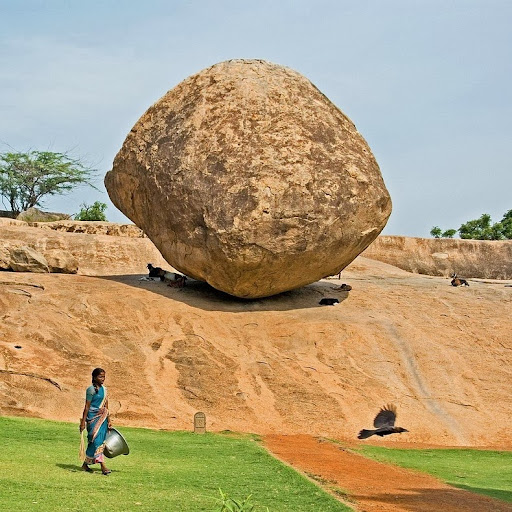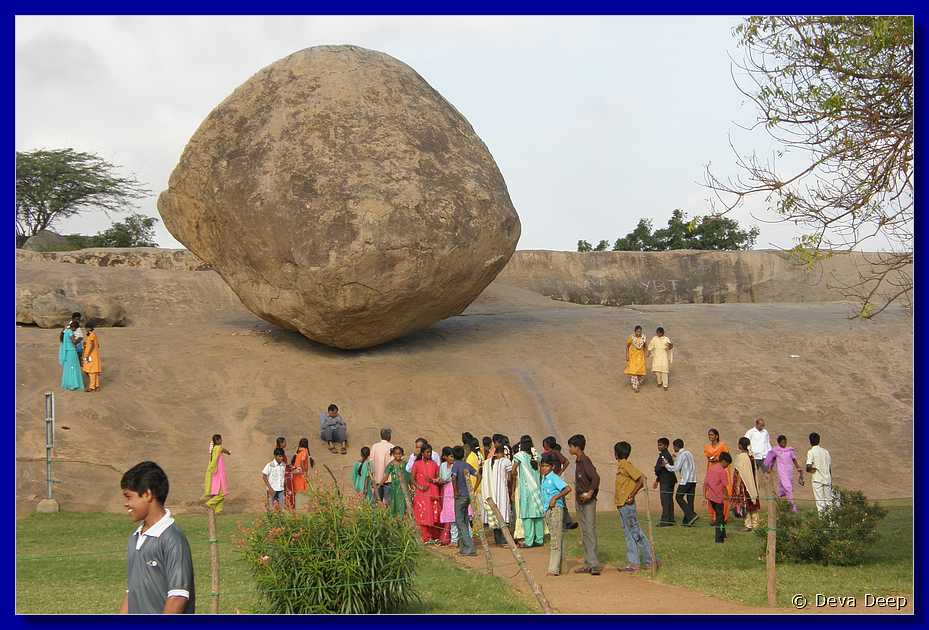That link has nothing to do with the rock we are looking at.
No, but it provides an explanation for how glaciers cause erratics and balancing rock formations.
You think there was once a glacier in southern India. What are you basing this idea upon? How long ago was this?
See here: https://en.wikipedia.org/wiki/Ice_age#Major_ice_ages
How did the glacier move on flat terrain?
Gravity-based self-induced flow. "Glaciers move by internal deformation and basal sliding. Ice masses flow across flat terrain as well as down slopes. Only after an ice mass has attained a size, thickness, and configuration that produces enough stress to cause it to flow as a solid or to slip over its base is it considered a glacier." -- http://www2.nature.nps.gov/views/KCs/Glaciers/HTML/ET_Intro.htm
How was the rock rounded?
Various processes of erosion.
Incidentally, the rock upon which "Krishna's Butter Ball" sits appears to me to show some evidence of glacial striation and/or glacial polish.
How has it remained in place in the period of transition from ice age to today?
It is "held in place by static friction and the stability of its lopsided shape," as I quoted someone earlier.
Last edited:







